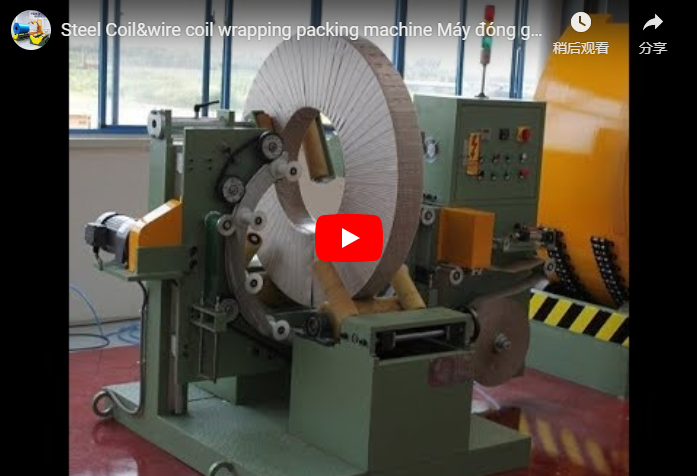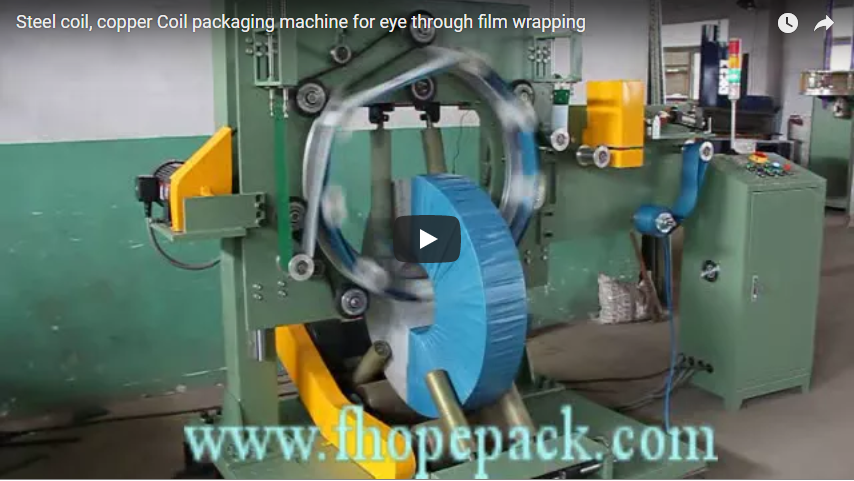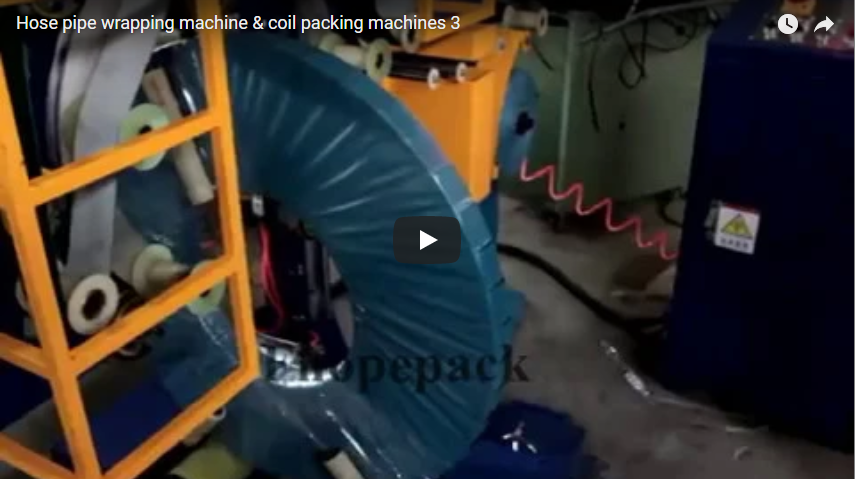Enhancing Coil Integrity: The Essential Guide to Automated Packing Machines for Copper and Alloy Steel Strips
Copper and alloy steel strips are foundational materials in numerous critical industries, from electronics and automotive manufacturing to construction and energy. Protecting the integrity of these valuable coils during handling, storage, and transit isn't just good practice—it's essential for maintaining product quality, preventing financial loss, and ensuring supply chain reliability. While manual packing methods exist, they often fall short in terms of consistency, efficiency, and the level of protection required.
Enter the automated coil packing machine: a specialized solution engineered to address these challenges head-on.
1. Why Robust Coil Packing is Non-Negotiable
Before delving into the machinery, let's underscore the stakes. Improperly packed copper and alloy steel coils are vulnerable to a range of issues:
- Surface Damage: Scratches, dents, and abrasions can compromise the material's usability and aesthetic appeal.
- Corrosion: Exposure to moisture and atmospheric contaminants can lead to rust (on steel) or oxidation (on copper), degrading the material.
- Deformation: Poor support can cause coils to lose their shape, especially during rough transit.
- Contamination: Dust and dirt ingress can affect downstream processing.
These issues translate directly into costly rejections, reprocessing expenses, production delays, and damage to your brand reputation.
2. The Automated Coil Packing Machine: A Technical Overview
At its core, an automated coil packing machine, specifically designed for materials like copper and alloy steel strips, provides a secure, consistent, and efficient wrapping solution. These machines typically utilize an orbital wrapping process where the wrapping material (like stretch film, VCI paper, or HDPE) is dispensed from a shuttle that rotates around the stationary or indexed coil.
3. Key Features and Capabilities to Look For
Modern coil packing machines offer a suite of features tailored to industrial demands:
- Parameter Flexibility: Adjustable settings to accommodate various coil dimensions:
- Outside Diameter (OD): Typically handles a wide range (e.g., 500mm - 2000mm).
- Inside Diameter (ID): Compatible with standard core sizes (e.g., 300mm, 400mm, 508mm).
- Width: Capable of wrapping narrow to wide strips (e.g., 100mm - 800mm).
- Weight Capacity: Designed to support significant coil weights (e.g., up to 5000kg or more).
- Wrapping Material Compatibility: Ability to use various protective materials:
- LLDPE Stretch Film: Provides containment, stability, and moisture resistance.
- VCI (Volatile Corrosion Inhibitor) Film/Paper: Actively protects ferrous and non-ferrous metals against corrosion – crucial for steel and copper.
- HDPE/Woven Fabric: Offers enhanced puncture and tear resistance.
- Automation Level: Ranging from semi-automatic (requiring manual loading/unloading) to fully automatic lines integrated with conveyors and coil tilters.
- Control System: Often feature PLC (Programmable Logic Controller) systems with user-friendly HMI (Human-Machine Interface) touchscreens for easy operation, parameter setting, and diagnostics.
- Wrapping Precision: Controlled overlap adjustment ensures complete coverage and efficient material usage. Automatic film cutting and clamping mechanisms streamline the process.
- Safety Features: Interlocked guarding, emergency stops, and sensors to protect operators and equipment.
4. The Wrapping Process: A Seamless Workflow
From an operator's perspective, interacting with a well-designed machine is straightforward:
- Coil Loading: The coil is typically placed onto the machine's support rollers or conveyor system, often using a C-hook, forklift, or integrated coil car.
- Cycle Initiation: The operator selects the pre-programmed recipe or adjusts parameters via the HMI and starts the wrapping cycle.
- Orbital Wrapping: The wrapping shuttle begins rotating through the eye of the coil, dispensing the chosen packaging material under controlled tension. The coil may remain stationary or be slowly rotated depending on the machine design to ensure even coverage.
- Material Application: Layers of film or paper are precisely applied, overlapping according to the set parameters to create a tight, protective cocoon around the coil.
- Cutting & Sealing: Upon cycle completion, the machine automatically cuts the wrapping material and secures the tail end (often via heat sealing or wiping).
- Coil Unloading: The fully wrapped, protected coil is ready for removal and transfer to storage or shipping.
5. Tangible Benefits for Manufacturers and Distributors
Investing in an automated coil packing machine delivers significant advantages:
- Enhanced Product Protection: Consistent, tight wrapping minimizes damage and corrosion, ensuring products arrive in pristine condition. The ability to incorporate VCI materials is particularly vital for copper and alloy steel.
- Improved Operational Efficiency: Drastically reduces packing time compared to manual methods, increasing throughput.
- Reduced Labor Costs: Frees up personnel from time-consuming manual wrapping tasks for more value-added activities.
- Material Savings: Precise tension control and overlap settings optimize the use of wrapping materials.
- Increased Safety: Reduces manual handling risks associated with manipulating large coils and wrapping materials.
- Professional Presentation: Uniformly wrapped coils project a high standard of quality and care.
6. Tailored Protection for Sensitive Metals
Copper's susceptibility to tarnishing and oxidation, and alloy steel's vulnerability to rust, make automated wrapping with appropriate materials (especially VCI-infused films or papers) indispensable. The consistent, tight wrap minimizes environmental exposure, preserving the material's integrity from the factory floor to the end-user.
7. Exploring Specific Solutions
For businesses handling copper and alloy steel strips, investigating dedicated machinery is key. Options like the FPC-300 Copper Coil Wrapper exemplify the type of specialized equipment available, offering features tailored to these specific applications.
Conclusion: A Strategic Investment in Quality
In today's competitive market, ensuring the quality of copper and alloy steel strips throughout the supply chain is critical. An automated coil packing machine is more than just packaging equipment; it's a strategic investment in product integrity, operational efficiency, worker safety, and customer satisfaction. By adopting this technology, manufacturers and distributors can confidently protect their valuable materials and maintain their competitive edge.
For inquiries or further information on coil packing solutions:
info@fhopepack.com






